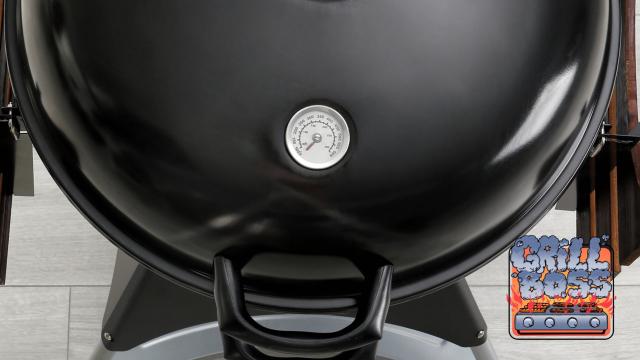With one big, notable exception, I am a woman of few enemies…But I also hate the stupid dial thermometers you find at the top of so many charcoal and gas BBQs, and I get disproportionately miffed when respected food publications sanction their use. I would make them illegal if I had any legislative power, but I don’t, so instead I will send this missive out onto the world wide web, hoping it convinces my fellow grillers and BBQ dads to ignore it entirely.
Unlike an oven, most grills do not come with a digital temperature readout. My Weber Kettle definitely didn’t. What they do come with is a little dial that, supposedly, tells you the ambient temperature inside your grill. Only it doesn’t. It tells you the temperature of your grill in that one spot, which is largely useless.
If you’re grilling more than hot dogs, knowing the temperature inside your grill is crucial. This is especially true when cooking big, smoky hunks of meat, like pork butts, turkey, lamb, whole ducks, and brisket, and even smaller pieces of protein like chicken parts and ribeye steaks. A lot of those recipes call for a two-zone set up. If you’re using a charcoal grill — and I always am — this means piling hot coals on one side (for searing and browning), and leaving the other side coal-less (for slow cooking and smoking). If you’re using gas, it means turning one side of grill on and leaving the other side off.
If you’re using a gas grill, temp control is fairly easy — you move the little knobs. If you’re using charcoal, it’s a little more involved. You manipulate the amount of air flowing in and out of the grill by opening and closing the vents under the coals and on top of the lid. The more open they are, the more oxygen your coals see, and the hotter they get.
By positioning the top vent opposite the pile of coals and placing your food on the same side, you create a sort of convection oven. Air flows into the bottom vents, up through the hot coals (and smoking wood, if using), and around your food before making its way out of the top vents.
On most charcoal grills, the vent and dial thermometer are positioned on opposite sides of the lid. Even if that dial is accurate — and it will never be as accurate as a digital thermometer — it will only tell you the temperature of the air that is directly over the coals, which is (obviously) way hotter than the other, coal-less side. It’s no better on a gas grill — that dial usually sits in the middle of the grill, in between the two zones, giving an inaccurate, useless average. (If you tend to grill during the winter, that dial can also be influenced by the elements, leading to further inaccuracy.)
Buy a digital thermometer. Please.
I am cheap and lazy, and am always looking for ways to cook without extra, specialised equipment, but if you are serious about grilling accurately and safely, you need an external digital thermometer — preferably one with at least two probes, so you can monitor the temperature of your grill and food at the same time. Fortunately, you can get one for about 30 bucks, which is the same price as a nice steak (and will ensure you don’t mess up your nice steak).
Not only does it give you better control, it takes the guess work out of cooking, which is good, because guessing the temperature of meat is a dangerous gambit. I honestly thought we were past this as a society, but I saw a smoked chicken recipe just a few days ago that instructed the reader to smoke the bird without a thermometer, “until the juices ran clear.” This is a bad, potentially dangerous recommendation, because juice colour is not directly tied to temperature.
By clipping a probe to the cooler side of the grill, you can monitor the temperature that actually matters — the temperature of the environment your food will actually be sitting in. By sticking a second probe into your food, you’ll know exactly when to take it off, so you won’t overcook it (gross) or undercook it (even grosser). You’ll also be able to better control the rate at which you cook your food, allowing you to adjust the vents as needed to hit that perfect low and slow temp of 120°C, for better tasting, smoky (safe) barbecue.

Leave a Reply
You must be logged in to post a comment.